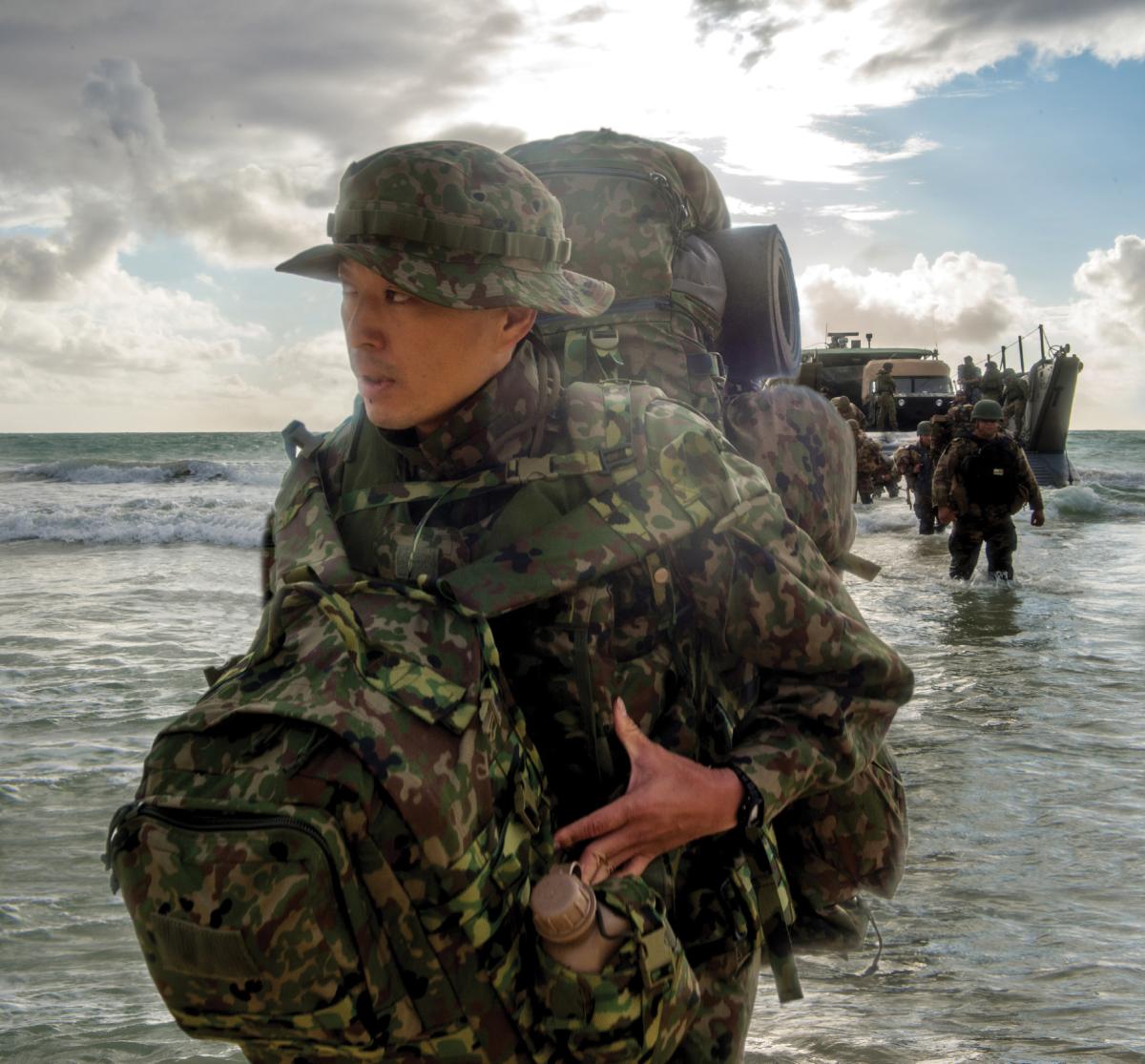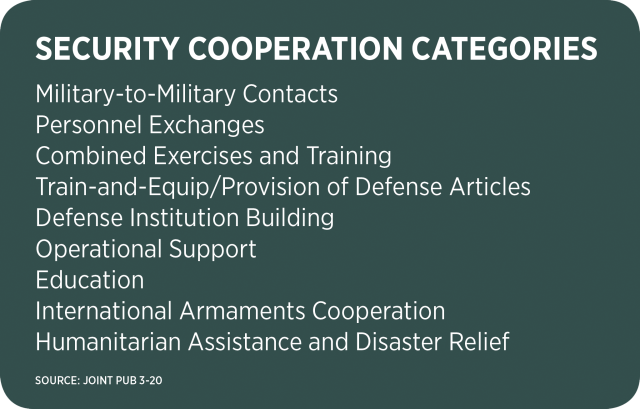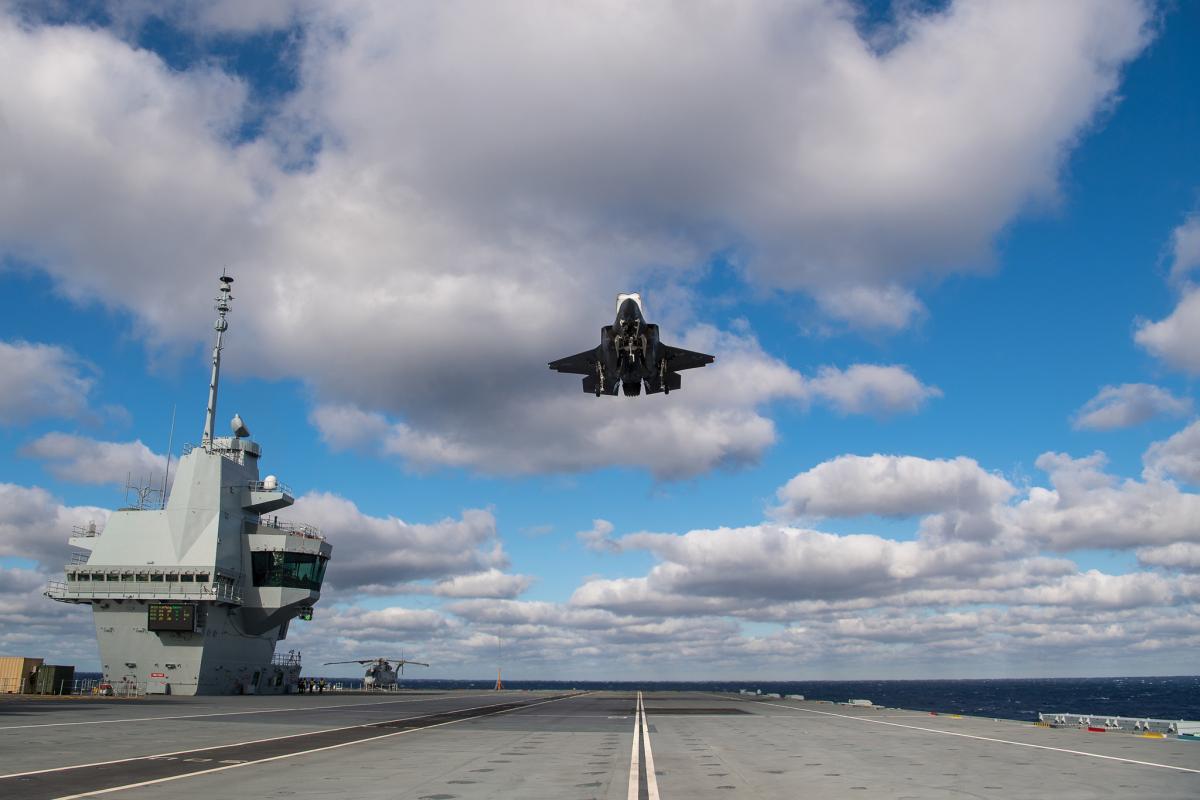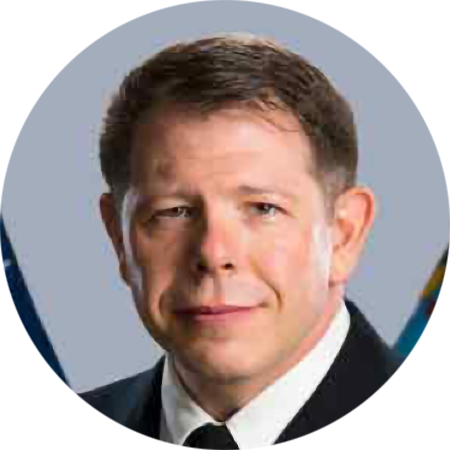The 2018 National Defense Strategy (NDS) prioritizes great power competition with Russia and China after more than 17 years of focus on counterterror. Praised for its clarity, the strategy lays out three lines of effort through which to restore the United States’ competitive military advantage: build a more lethal force, strengthen alliances and attract new partners, and reform the Department of Defense (DoD) for greater performance and affordability. While lethality and reforms to business practices already are driving change in Navy organization and acquisitions, relatively little innovation has focused on building alliances and partnerships. To advance what the NDS calls an “asymmetric strategic advantage that no competitor or rival can match,” the Navy should recognize the foreign area officer (FAO) community as the service’s lead for ally and partner development and optimize its manning, training, and organization accordingly. Unlike the low-end theater security cooperation of years past, security cooperation in the new great power era will provide the access, maneuver, interoperability, and coalition lethality Navy warfighters will need to
prevail in a high-end fight.
Stronger Alliances and New Partners
Compared with previous documents, the 2018 NDS elevates the importance of allies and partners by making them one of only three components of its “strategic approach.” As former Secretary of Defense James Mattis emphasized during his Senate confirmation hearing, “History is clear: Nations with strong allies thrive, and those without them wither.”1 The strategy specifies that our alliances and partnerships should uphold a foundation of mutual respect, responsibility, priorities, and accountability; expand regional consultative mechanisms and collaborative planning; and deepen interoperability. Further, the strategy directs DoD to support interagency approaches that work by, with, and through our allies and partners to counteract Russia’s and China’s gray-zone coercion efforts.2
Chief of Naval Operations (CNO) Admiral John Richardson also made allies and partners a key element of his “Design for Maintaining Maritime Superiority (Version 2.0),” which directs the Navy to enhance its integration with other agencies and prioritize key international partnerships through information sharing, interoperability initiatives, and combined operations. With strategic ends clearly defined—and aligned with the NDS—doctrine provides invaluable guidance on the ways the Navy should achieve them.
Strength through Security Cooperation
Joint Publication 3-20, “Security Cooperation,” defines security cooperation as “all DoD interactions with foreign security establishments to build security relationships that: 1) Promote specific U.S. security interests; 2) Develop allied and partner nation military and security capabilities for self-defense and multinational operations; and 3) Provide U.S. forces with peacetime and contingency access to allied and partner nations.”3 It further delineates nine categories, with related programs and statutory authorities, that compose the security cooperation “toolbox.” Practitioners employ its tools to create desired effects across varied operational environments as informed by commander’s intent and intelligence. This requires dynamic collaboration among host nations, U.S. diplomats, geographic combatant commands, private industry, and other stakeholders.
While security cooperation activities occur across the range of military operations, they play a particularly important role “left of bang.” Exercises, military-to-military exchanges, foreign military sales, and information-sharing agreements counter the influence of competitors and deter coercion of our friends. Critically, they build the relationships, access, and interoperability that U.S. warfighters will need—before open conflict—to prevail in high-end combat.
Naval Warfare Publication 3-07.20, “Navy Support to Security Cooperation” (September 2015), provides important service guidance and clarifies the Navy’s forward maritime security cooperation roles and procedures. It distinguishes security cooperation as a subset of military engagement—with its own tactics, techniques, and procedures—while providing a clear link between security cooperation functions and required fleet operational capabilities.4 Indeed, as the Navy adopts dynamic force employment, well-executed security cooperation activities and international exercises will be essential to building and maintaining the warfighting readiness of forward- deployed units.
Optimizing the Means
Executing the security cooperation mission requires a well-manned, trained, and organized professional workforce. The military services have a longstanding Title 10 responsibility to provide joint force commanders with qualified military and civilian personnel to carry out security cooperation assignments.5 Congress has not been satisfied with how this requirement has been executed, however. As a result, the 2017 National Defense Authorization Act mandated implementation of a security cooperation workforce-development program, which requires DoD to develop appropriate skills, capabilities, and experience within the workforce; to allocate personnel to relevant billets rationally; and to ensure the security cooperation community has an appropriate size, organization, and chain of command.6 The House Committee on Armed Services recently released House Report 115-676 on the National Defense Authorization Act for Fiscal Year 2019, in which it reiterated its continued commitment to this program and its applicability to the FAO community. Properly implemented, the development program will change fundamentally how the Navy mans, trains, and organizes its security cooperation community.
Considering these strategic and statutory imperatives, the Navy should implement the following innovations. Both near-term, low-cost actions and long-term goals are provided.
1. Acknowledge FAOs as the core of the Navy’s security cooperation community and designate them lead for ally and partner development in strategy, policy, and doctrine.
Assistant Secretary of the Navy for Research, Development, and Acquisition James Geurts has said that when facing a challenge, it is vital to put someone in charge so everyone else can figure out how they can help the leader achieve “speed in the right direction.”7 Thus, the first step is to assign clear ownership of the security cooperation mission.
The FAO community—375 active-duty and 50 reserve officers—was established in 2006 to act as a force multiplier by offering a small-footprint, low-cost means of enhancing fleet engagement through advanced language, regional expertise, and cultural skills.8 Defining FAOs by their enabling capability of language/regional expertise/cultural skill, however, is like defining SEALs by their ability to shoot, parachute, and dive. Enabling skill sets are relevant only in support of a well-defined mission. For FAOs, that mission is security cooperation.9
As currently employed, FAOs are assigned globally to three lines of work: performing security cooperation duties; providing political-military expertise on U.S. and foreign staffs; and serving in Defense Attaché Service assignments.10 Security cooperation is the only mission unique to the FAO community, however, with FAOs filling 95 percent of the Navy’s Security Cooperation Organization (SCO) billets in 72 countries.11 FAOs form relationships and gain operational perspective by leading security cooperation programs and activities with allies and partners, in this way becoming better staff subject matter experts and attachés. While FAOs should continue to serve in all three roles, the Navy would maximize warfighting effects by optimizing the community for security cooperation, its foundational role.
2. Develop a tiered additional qualification designation that captures security cooperation training and experience.
At less than 1 percent of the active-duty officer corps, FAOs cannot support one-third of the NDS’s strategic approach alone. They will need to be supplemented by officers with relevant credentials and experience. Although the Navy currently has four subspecialty codes and five additional qualification designators (AQDs) to document an officer’s language/regional expertise/cultural education and experience, none captures the combination of security cooperation training and experience Congress has mandated. Therefore, the Navy should create a tiered AQD for security cooperation to be awarded to FAOs and non-FAO security cooperation officers on completion of applicable training and assignments.12
3. Validate and adjust the security cooperation billet base.
According to a 2018 RAND study, the Navy lacks a comprehensive understanding of its own security cooperation jobs.13 Therefore, the Navy should validate its billet base for proper coding,prioritize placement of FAOs in key positions, and develop a plan to fill other manpower needs with non-FAO security cooperation officers and enlisted personnel.14 The Navy also should consider expanding the FAO community beyond its current 1-to-1 body-to-billet stated end strength, as at any given time, approximately 20 percent of the community is in trainee, transient, hold, or student status, reducing the effective ratio. This results in critical billet gaps and drives expedient (as opposed to optimal) fit/fill detailing. It is imperative both strategically and legally to get the right people for the job.
4. Screen prospective FAOs for personality and interpersonal skills in addition to language ability.
The FAO community’s small size and mandate to produce disproportionately large strategic effects—while operating far from the flagpole in small groups and in unfamiliar operational environments—demand that only the right men and women be invited into the community.15 Current selection practices, however, emphasize language ability, which can be quantified through assessments, while failing to assess a candidate’s ability to establish and maintain strong relationships with allies and interagency partners—the first principle of security cooperation. How well a person speaks a language is inconsequential if he or she lacks the necessary cultural and interpersonal skills to influence interagency, host-nation, or coalition support on behalf of the fleet. In most cases, diplomatic adaptability is more important to success than language fluency. Accordingly, the Navy should incorporate a personality assessment and an appropriately detailed interview into the FAO accession process, similar in concept to those used by the SEAL and nuclear communities.
5. Develop a relevant training continuum for FAOs and security cooperation community support personnel.
Navy FAO development practices today focus exclusively on language and regional expertise education but lack adequate functional training in security cooperation tactics, techniques, and procedures.16 New FAOs attend a five-day joint familiarization course, but it is Army- and attaché-centric and does not provide meaningful training in Navy security cooperation doctrine or instructions. For SCO or attaché billets, FAOs receive joint-funded technical training, but new FAOs assigned to Navy staffs receive no mission-related instruction. Instead, they must rely on on-the-job training and mentoring for professional development.17 All Navy FAOs, regardless of initial assignment, should receive a common baseline of mission preparation that includes:
- Attendance at the five-day Maritime Engagement and Crisis Response Course, which provides basic knowledge of concepts, terms, organizations, and planning considerations for crisis response, security cooperation, and limited contingency operations18
- Completion of the five-day Marine Corps Security Cooperation Planners’ Course
- Completion of a six-month internship at a regional SCO to gain real-life exposure to security cooperation programs and activities while honing language skills to meet the DoD requirement of six months in region before full qualification (Army, Marine Corps, and Air Force FAOs all fulfill this requirement.19)
- A recommendation for full qualification by the senior Navy FAO at the embassy.
If security cooperation is to be an enduring Navy role—as strategic guidance and statute indicate—it is time to establish a schoolhouse to lead training across the fleet. Ideally, the Navy would create a Center for Maritime Security Cooperation at the Naval Postgraduate School in Monterey, California. This school for Navy, Marine, and potentially Coast Guard personnel would be a FAO shore command, developing and delivering initial, mid-career, and senior courses; familiarization courses for naval attachés, security cooperation community uniformed and civilian support staff and non-naval FAOs assigned to maritime nations; and modules for courses such as the Prospective Commanding Officers Course, Capstone, and Maritime Staff Operators Course.20 Subjects not currently taught elsewhere would include strategic messaging, exercise planning, international negotiations, cross-cultural leadership, distributed mentorship, ethics, interpersonal skills, and emotional intelligence.
6. Realign FAOs and security cooperation under the Director, Expeditionary Warfare (OPNAV N95).
Currently, the Deputy CNO (DCNO) for Operation, Plans, and Strategy (N3N5) sponsors and administers the FAO community, while the DCNO for Manpower, Personnel, Training, and Education (N1) pays for initial language/regional expertise/culture acquisition and the DCNO for Information Warfare (N2N6) pays for sustainment of the acquired skills and knowledge. This alignment leaves the FAO community without financial resources to pay for training in its primary security cooperation role. To correct this, the FAO community and the security cooperation function should be aligned under the single resource-and-requirements sponsorship of the Expeditionary Warfare Directorate (OPNAV N95).21
OPNAV N95 already is the resource sponsor and de facto owner of security cooperation through its sponsorship of the Navy’s only active course on the topic, Maritime Engagement and Crisis Response. In addition, it is responsible for naval special warfare, explosive ordnance disposal, and naval construction forces, which regularly participate in security cooperation activities.22 N95 is a natural fit for FAOs, as they are prepositioned in 72 countries worldwide, making them the Navy’s most expeditionary community. As such, FAOs form the leading edge of the joint force across a range of military operations and are essential to ensure access and maneuver for the naval and joint campaign, access that cannot be assumed.23
Indeed, as the Navy and Marine Corps seek to operationalize the dynamic force employment and “Littoral Operations in a Contested Environment” concepts, FAOs increasingly will become “foreign access officers,” securing mission-essential short-notice entree for warfighters to ports, airfields, and suppliers of allies and nontraditional partners alike. Accordingly, FAOs should be integrated fully into planning and developing concepts of operation.
7. Establish a Navy Security Cooperation Command reporting directly to U.S. Fleet Forces Command under type command of Navy Expeditionary Combat Command.
Current responsibility for security cooperation is spread among at least 13 different Department of the Navy organizations. It lacks an overall commander accountable for generating forces, doctrine, and concepts of operations and integrating capabilities to conduct full-spectrum maritime security cooperation.24 Accordingly, the CNO should establish the Navy Security Cooperation Command (NSCC) as a FAO shore command to:
- Provide and support qualified active and reserve officer and enlisted, civilian, and contract personnel to carry out security cooperation assignments worldwide
- Support regional Navy component commands, fleets, and task forces in the assessment, planning, implementation, and monitoring of security cooperation through validated plans, policies, doctrine, and implementation guidance
- Ensure the integration of Navy component command security cooperation planning and activities into combatant command theater campaign plans
- Recommend allocation of resources to achieve these objectives.25
Establishing the NSCC under the Navy Expeditionary Combat Command would allow the FAO community to leverage existing infrastructure for training and doctrine development, directly support U.S. Fleet Forces Command’s force-generation mission, and provide dedicated flag leadership and accountability while complying with the statutory requirement for an appropriate chain of command.
Maintain Maritime Superiority
The NDS and “Design for Maintaining Maritime Superiority (Version 2.0)” direct the Navy to strengthen traditional alliances and establish new partnerships to restore the nation’s competitive military advantage against the possibility of high-end combat and to expand the competitive space in the gray zone against China and Russia. FAOs already lead the way, but the gray zone gets grayer by the day. The old notion that theater security cooperation is about holding hands and handing out basketballs no longer applies in the new great power competition era. Accordingly, the security cooperation community’s manning, training, and organization must change now to enable the Navy to wage effectively the conflict the United States’ adversaries have already begun.
1. GEN James Mattis, USMC (Ret.), testimony before the Senate Armed Services Committee, 12 January 2017.
2. The Center for Strategic and International Studies has proposed a working definition of gray zone competition as powers engaging in “attempts to achieve one’s security objectives without resort to direct and sizable use of force.” Michael J. Green, Kathleen H. Hicks, Zack Cooper, John Schaus, and Jake Douglas, Countering Coercion in Maritime Asia: The Theory and Practice of Gray Zone Deterrence (Washington, DC: CSIS/Rowman & Littlefield, 2017).
3. Though frequently but incorrectly used interchangeably, “security cooperation” and “security assistance” are not synonymous. Security cooperation is a Title 10 mission area, while security assistance is a Title 22 mission under Department of State authority and budget but administered by DoD through the Defense Security Cooperation Agency.
4. U.S. Armed Forces routinely interact with other nations’ armed forces or civilian authorities through military engagement. The U.S. Navy can “military engage” with competitors, but it will not “security cooperate” with them. U.S. Navy, OPNAVINST C3501.2L, “Mission Areas and Required Operational Capability/Projected Operational Environment Statements,” 30 June 2017.
5. Department of Defense, DoD Directive 5132.03, “DoD Policy and Responsibilities Relating to Security Cooperation,” 29 December 2016.
6. Section 384, Title 10, of the United States Code.
7. James Geurts, remarks at the 23rd Annual Expeditionary Warfare Conference, 17 October 2018.
8. Department of the Navy, OPNAVINST 1301.10C, “Navy Foreign Area Officer Community,” 30 June 2016
9. Three of six FAO core competencies specified by OPNAVINST 1301.10C are related to security cooperation.
10. The Defense Attaché Service is administered by the Defense Intelligence Agency. See OPNAVINST 1301.11, “Defense Attaché Service” (19 August 2014) and DoD Directive 5205.75, “DoD Operations at U.S. Embassies, Change 1–22” (May 2017) for details on attaché duties.
11. Known by various names, this organization works under the authority of the ambassador, reports directly to the geographic combatant commander in support of the theater campaign plan. Military units conducting security cooperation activities in a host nation coordinate with the security cooperation personnel, but their lines of authority are through their service components and the combatant commander.
12. The development of non-FAO security cooperation officers would have been a perfect fit for the Specialty Career Path Program, supporting the demand for unrestricted line officer expertise in expanding mission areas. Unfortunately, this program appears dormant if not dead, with no selection boards held since July 2015.
13. M. Wade Markel et al., “RAND Report: Career Development for the Department of Defense Security Cooperation Workforce” (2018).
14. Relevant naval occupational billet codes include staff Theater Security Cooperation Officer (9058), Military Assistance Programs Officer (9052), Civil Affairs Officer (9462), Staff Interagency Coordination Officer (9061), and International Affairs Officer (9942). Enlisted classifications include Expeditionary Maritime Security (775B), Maritime Civil Affairs (801G), and Expeditionary Security Force Advisor/Trainer (809G).
15. The author was one of only two officers, three Americans in total, at the SCO in Malaysia, a geostrategically important emerging partner nation.
16. Department of Defense, DoD Directive 1315.17, “Military Department Foreign Area Officer (FAO) Programs,” 28 April 2005, and DoD Instruction 1315.20, “Management of DoD Foreign Area Officer (FAO) Programs,” 28 September 2007.
17. The Defense Institute for Security Cooperation Studies’ four-week “Security Cooperation Management Overseas” course focuses almost exclusively on the Security Assistance Management Manual (DSCA Manual 5105.38-M) and does not teach relevant joint doctrine, much less Navy doctrine. DIA’s 13-week Joint Military Attaché School focuses almost exclusively on intelligence collection and reporting.
18. There is no record of any FAO attending this course in at least four years.
19. Department of Defense, DoD Instruction 1315.20.
20. Possibly the Defense Security Cooperation Agency could fund some of the associated costs, as the program would fulfill the Sea Services’ requirement for Defense Security Cooperation University Phase I.
21. Navy International Programs Office (NIPO) is inherently an acquisition professional activity that supports security assistance (2/9 SC Categories) management as opposed to the entire security cooperation mission. It does not generate requirements for or have administrative authority over security cooperation forces in the field.
22. Joint Combined Exchange Training, Humanitarian Mine Action Program, Humanitarian Assistance/Disaster Relief, respectively.
23. Expeditionary Warfare Division (OPNAV N95) Pamphlet, September 2018; NATO ally Turkey famously denied basing prior to Operation Iraqi Freedom in 2003, only allowing overflight of its territory.
24. NWP 3-07-20.
25. Department of Defense, DoD Directive 5132.03.






